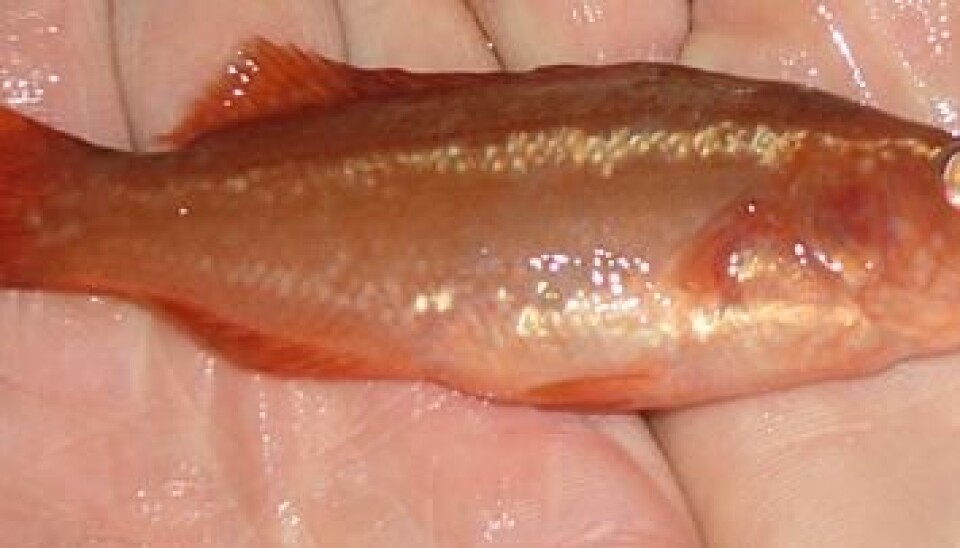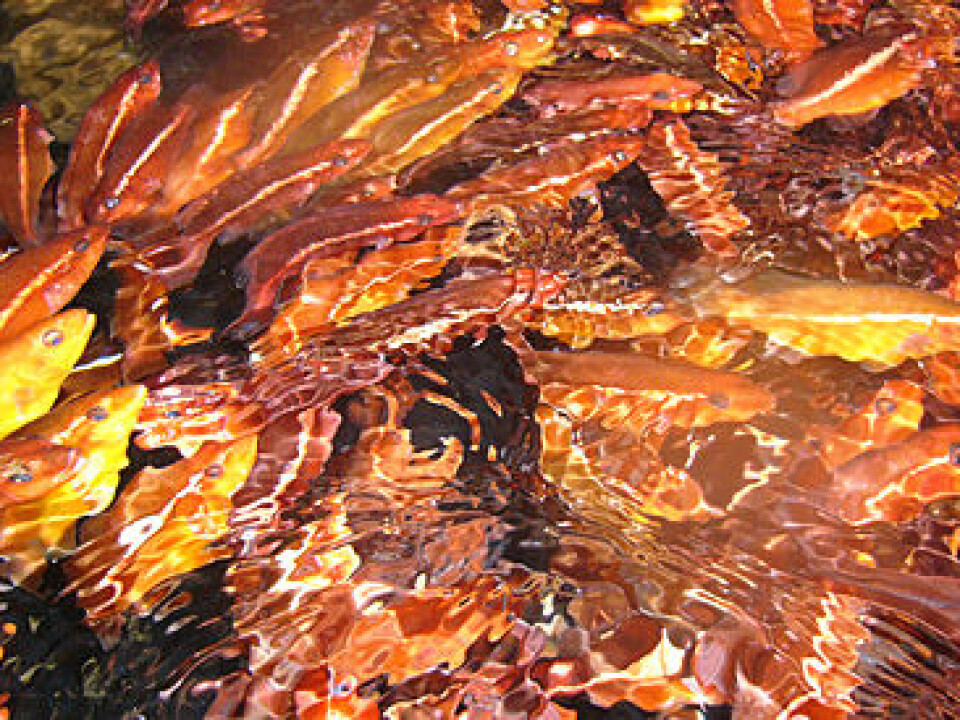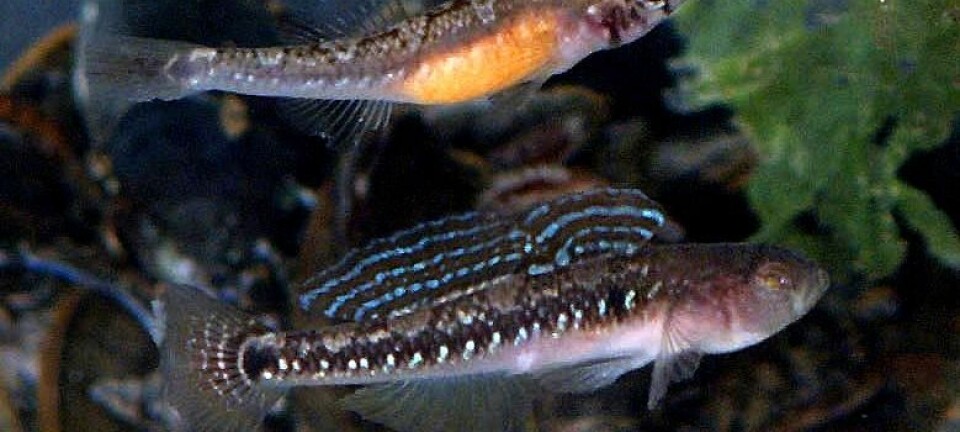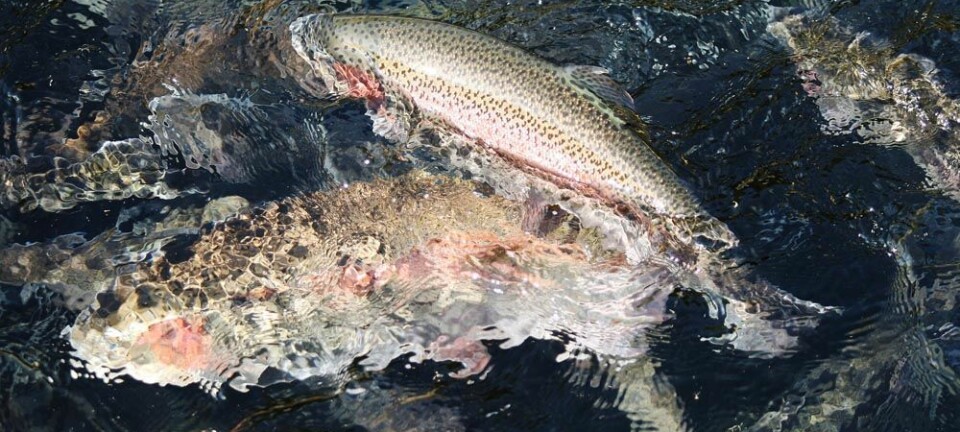This article was produced and financed by The Research Council of Norway

Picky young wrasse want shrimp
Ballan wrasse are picky eaters when young. As adults, they eat sea lice off the skin of salmon – which makes them valuable to fish farmers. But as juveniles, wrasse want to be served shrimp.
Denne artikkelen er over ti år gammel og kan inneholde utdatert informasjon.
Seafood giant Marine Harvest produces roughly 25 per cent of all farmed salmon in Norway. The company has to deal with sea lice at all of its salmon production sites and is looking to reduce its use of delousing chemicals.
For the past three years at its Marine Harvest Labrus (MHL) near Bergen, the company has been diligently developing methods to farm Ballan wrasse.
First phase completed
“It’s not feasible to catch enough wild wrasse,” says MHL’s Espen Grøtan. “Not only would it be difficult to secure enough of them, we also need to take a precautionary attitude about overfishing wild stocks.”
Finding sound methods of producing Ballan wrasse has been a collaborative effort; since 2010 MHL has been working with scientists from three major Norwegian research institutes – the Institute of Nutrition and Seafood Research (NIFES), the Norwegian Institute of Food, Fisheries and Aquaculture Research (Nofima) and the Institute of Marine Research – as well as organic salmon producer Villa Organic.

MHL is now to the point where it can mass-produce Ballan wrasse juveniles, but challenges still remain, particularly relating to the on-growing phase, before these juveniles can be transferred to sea cages and start their careers delousing salmon.
Expensive tastes
One need is improved, less costly on-growing feed . Ballan wrasse do well on a relatively low-fat diet, and research has revealed that they tolerate a large proportion of carbohydrates. The challenge lies in finding an adequate and affordable supply of protein.
“Ballan wrasse appear to have a discerning palate,” explains Grøtan.
“They reject the commercially available feed alternatives. Their very favourite meal is shrimp – whether ground up, frozen or whole. But shrimp is expensive. We’ve tried mussels, krill, low-quality shrimp meal, European flying squid and fish meal. Our trials indicate that juveniles in the early on-growing phase can become accustomed to krill-based feed, but we are still searching for a satisfactory substitute for shrimp.”
Test broodstock going strong
For a year now, MHL has been rearing roughly 1 200 broodstock individuals on a soft-pellet diet fortified with 25 per cent shrimp. These individuals are being compared against a control group of Ballan wrasse caught in the wild to see if this feeding regime affects gonad nutritional composition.
“Analyses have been positive and show little nutrient depletion,” says Grøtan, “but we may still make some adjustments.”
This year, MHL can produce two to eight million wrasse juveniles, but capacity to raise them to the size where they can be transferred to sea cages is currently limited to around half a million. In the course of this summer and autumn, some 300 000 wrasse will be transferred to Marine Harvest salmon production sites. As on-growing facilities are added, this number can increase.
“We have not yet found the optimal ratio of Ballan wrasse to salmon in the cage,” says Grøtan, “but we estimate a need for two to four million wrasse each year.”
Translated by: Darren McKellep/Carol B. Eckmann
































